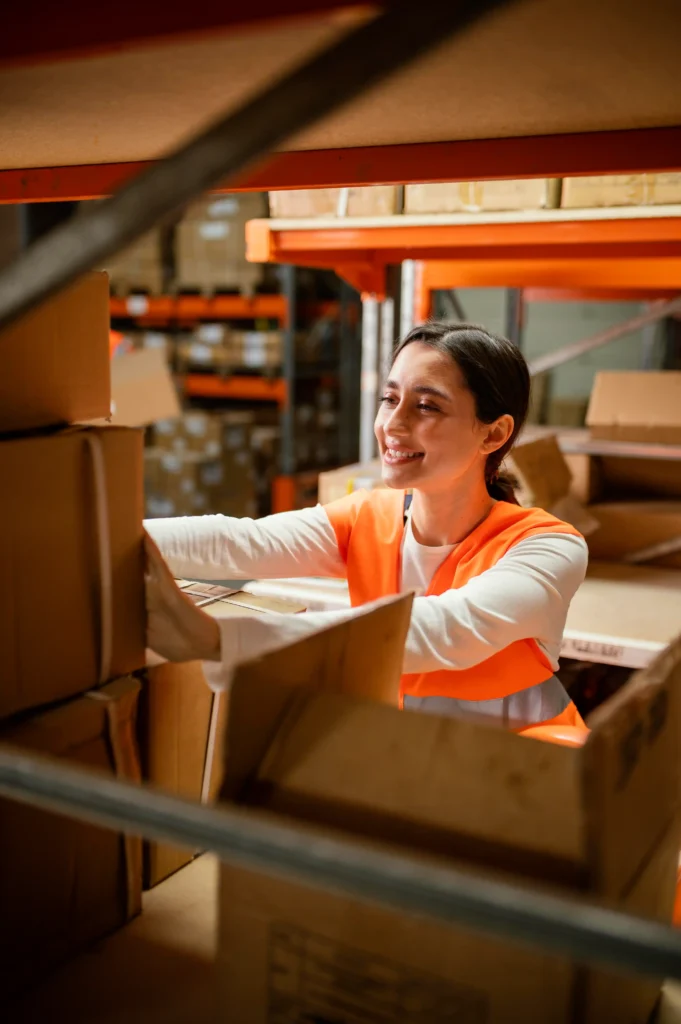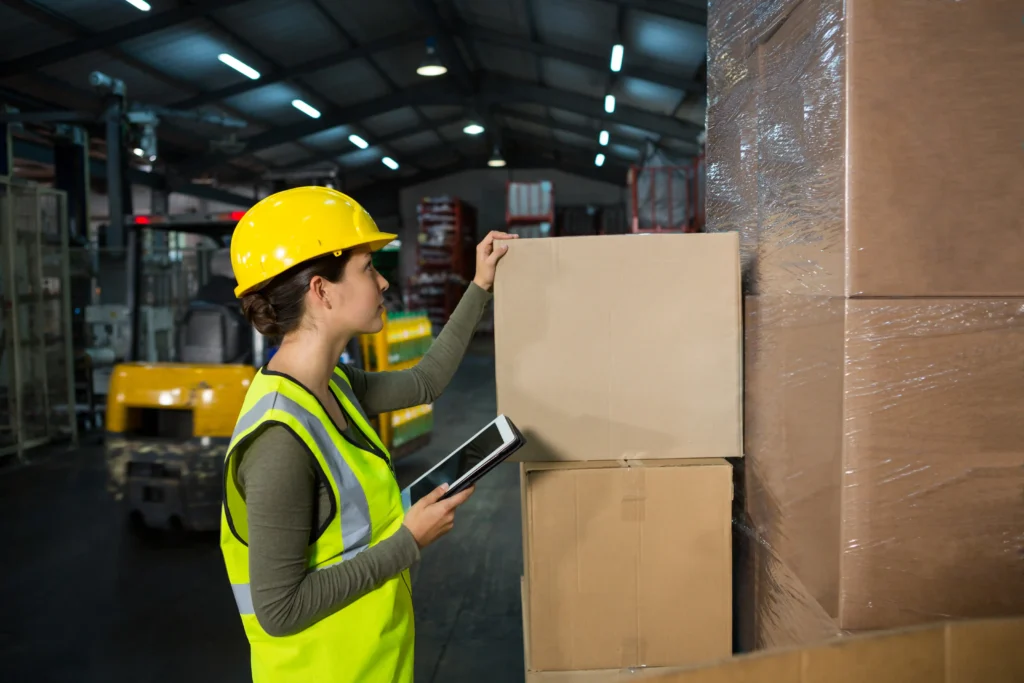
Industrial solutions and packaging in supply chain management are critical to delivering products efficiently. Have you ever wondered how Amazon ships millions of packages daily without delays or damages? The secret lies in effective packaging strategies in supply chain processes. Packaging influences everything from logistics efficiency to customer satisfaction. For instance, IKEA’s flat-pack design saves transportation costs while maintaining product integrity.
These examples show how packaging strategies in supply chain processes directly impact efficiency and costs. This blog will uncover 15 ways packaging drives success in the supply chain.
How Maker’s Row Can Support Your Packaging Needs
Maker’s Row is a trustworthy platform that connects businesses with emerging manufacturers. They deal in industrial solutions on packaging in supply chain management. These include efforts to source sustainable materials while designing packaging strategies to be effective. This all gives Maker’s Row the ability to help brands with the optimization of their supply chain processes. Example: A small business can afford their services to produce cheap packaging to meet its own requirements. As a result, by working with Maker’s Row, a company can therefore reduce waste and costs while also improving its supply chain efficiency.

15 Ways Packaging Impacts Supply Chain Management
Industrial solutions and packaging in supply chain management affect how goods travel from facilities to consumers. Picture a global electronics brand shipping fragile goods all around the world; without sturdy and efficient packaging, damages would be at an all-time high, affecting costs and creating unhappy customers. Companies like Coca-Cola and FedEx have applied innovative packaging strategies into their supply chain processes to reduce waste, enhance efficiency, and improve customer experience.
1. Protects Products During Transit
Packaging in supply chain management is the protection given to the products from damage during transportation. This is done with the aid of strong materials such as corrugated cardboard or bubble wrap that protect from impact, vibration, and other outside influences. For example, fragile electronics packaged with foam inserts can significantly reduce breakage rates, saving businesses from costly returns and earning the displeasure of the customer.
2. Improves Logistics Efficiency
Packages that are compact and stackable ensure optimum use of space in the truck and the warehouse. Uniform packing of items ensures rapid and efficient loading and unloading. For example, Coca-Cola’s use of stackable crates helps maximize truck capacity and reduce logistics costs.
3. Reduces transport costs
Lightweight packaging materials reduce the overall weight of the freight being carried, thereby causing less fuel to be consumed and less money to be spent in shipping. Companies like IKEA use flat-pack design so that they can send more in fewer trips and cut commercial costs.
4. To enhance warehouse storage
Efficient packing strategies in supply chain practices create warehouse space. For example, Amazon employs standardized box sizes to fit almost comfortably on shelves, thus maximizing space and easing storage and retrieval of the goods.
5. To support sustainability goals
Green packaging is aligned with global sustainability trends. Using recyclable packaging or biodegradable materials tends to limit the impact on the environment and gain the acceptance of eco-conscious consumers. Companies like Nestlé, having declared they would eventually move to 100% recyclable packaging by the year 2025, are also demonstrating great conscientiousness in their efforts toward sustainability.
6. Improves Supply Chain Visibility
Modern packaging often incorporates barcodes, QR codes, or RFID tags. These technologies enable real-time tracking of shipments, reducing errors and enhancing transparency. Walmart, for example, uses RFID-enabled packaging to track inventory accurately across its supply chain.

7. Lowers Costs of Inventory
A standardized system of packing sizes helps in inventory management. These uniform dimensions will help reasonably in predicting storage requirements and avoiding overstocking. For example, Procter & Gamble standardizes its packing, thereby lessening the complexity of warehouse operations and reducing costs.
8. Simplifies International Shipping
Packaging developed accordingly keeps international regulations and standards in mind to prevent delay at customs. The meeting of ISPM-15 standards for wooden pallets allows for smooth transit across international borders. Such regulations are very pertinent to a business operating in international trade.
9. Enhances Brand Perception
These custom items lead to the ultimate impression and lasting identity. In other words, Apple’s packaging is a glamourous embodiment of a minimalistic design that sells its premium brand; unboxing is a joy for its customers.
10. Speeds Up Order Fulfillment
Packaging design involves striving to optimize the picking and packing process to limit their time. Amazon labelled their boxes with pre-attached labels, bar codes, and great visibility to speed up orders and meet customer fulfillment expectations.
11. Reduces Material Waste
Proper packaging means that reduced material for the product is wasted as packing material, thereby reducing overall expenditure. For instance, in order to minimize some unnecessary waste, Dell’s initiative for sustainable packaging utilizes wheat straw and mushroom-foam-based materials.
12. Improves Product Stacking
Strong, stackable packaging prevents items from shifting or collapsing during shipping. Damaged palletized goods will be less likely due to the conditions created by shrink wrapping or banding.

13. Supports Return Management
Return-friendly packaging relieves the reverse logistics process for the customer. An example is Zappos with resealable boxes and preprinted return labels, making it easy for the customer, hence hassle-free returns.
14. Enhances Cold Chain Logistics
Emergency-type active packaging that keeps the quality of temperature-sensitive products will create a wider scope of intervention for pharmaceutical companies and cold chain products significantly dependent upon packaging. Temperature-controlled containers from Pfizer ensure vaccine efficacy for the entire journey.
15. Boosts Customer Experience
Packaging must be considered an extra art to enjoy the customer’s experience. Functional, easy-open designs that Amazonesque with little to no frustration are more convenient. Besides that, the aesthetic pulls one big memory.
Key Impacts of Packaging in Supply Chain Management
- Protection: Prevents Damage During Transit
- Efficiency: An appeal to streamline storage and logistics
- Sustainability: Advocates for environmentally friendly practices
- Cost Savings: Decreases shipping and material costs
- Tracking: Improves supply chain visibility
Examples of Packaging Strategies in Supply Chain
- Amazon: Uses frustration-free packaging to enhance customer experience and reduce waste.
- Coca-Cola: Implements returnable glass bottles to support sustainability goals.
- IKEA: Flat-pack designs maximize storage and reduce transportation costs.
Comparison of Packaging Strategies
| Strategy | Benefit | Example |
| Lightweight Packaging | Lowers shipping costs | FedEx |
| Returnable Packaging | Reduces waste | Coca-Cola |
| Custom Packaging | Enhances branding | Apple |
| RFID-enabled Packaging | Improves tracking | Walmart |
| Temperature-Controlled | Maintains product quality | Pfizer |
Conclusion
From an industrial perspective, packaging optimization is a central tenet of supply chain management. Resource allocation to aid processes such as reducing costs and increasing efficiency is a monumental transformation in packaging strategy within supply chain processes. Companies need to invest in creative systems to do justice when competition is high to meet customer satisfaction. They can utilize many resources provided by Maker’s Row to improve packaging operations.
Start your journey towards smarter, safer, and greener packaging solutions. For more insights, visit Maker’s Row! 🚀
Looking for more insights? Check these out!